The name Agra is mainly famous for the iconic UNESCO World Heritage Site, Taj Mahal. However, the city is more than just the Taj Mahal; it holds the history of a significant part of the Mughal Empire. The famous Agra Fort had been the home of Mughal Emperors for many generations. In those days, the entire Mughal kingdom used to be controlled from this Fort. The most famous Mughal king Akbar was based here most of the part of his rule, except the time he shifted his capital to Fatehpur Sikri for a couple of years. In the reign of Emperor Akbar, the Mughal Kingdom had thrived maximum. According to this famous Emperor,
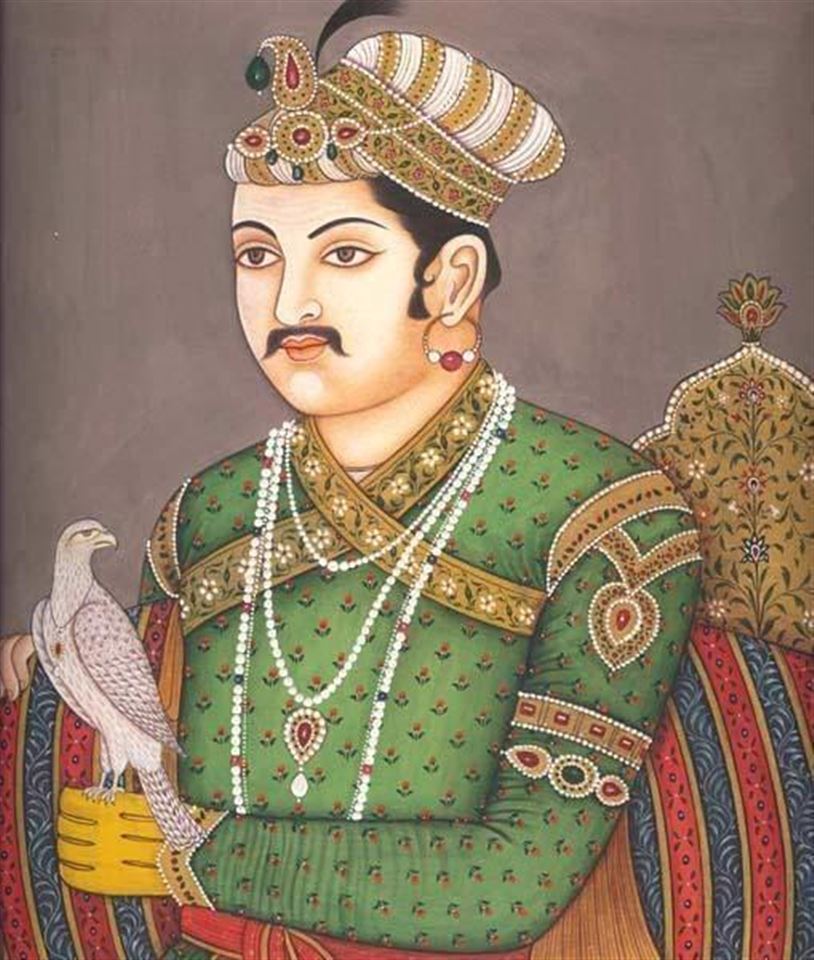 Mughal king Akbar by Unknown - Link
Mughal king Akbar by Unknown - Link
"A monarch should be ever intent on conquest, lest his neighbors rise in arms against him."
After Akbar, his son Emperor Jahangir and grandson Shah-Jahan continued ruling from this fort. The stories of these Emperors are still embedded in every corner of this fort. On a hot summer day of April, I started my journey to feel the era of royalty, kingdom, battles, and glory.
Entering Agra Fort
A strange thought came across my mind as soon as I stepped in the Agra Fort. Once, I read somewhere, that Emperor Akbar has forbidden the marriage of the Mughal princes to anyone outside the family after the betrayal of his sister’s husband. So, most of the princesses had to remain unmarried their whole life. A glimpse to the red brick fort had brought the vision of an alluring princess, dressed in diamonds and gold-strings—eyes sad with uncountable grief. From her bondage inside the grandeur of the palace, her eyes searched for her true love...maybe a soldier of lower rank, separated forever from his dream girl by the manner of birth. Standing in the land, where the mark of eternal love is located, these unseen love stories had lured me inside the palace, where the history of many generations of Mughal kings is still alive inside its bricks.
The red-marble large gate took me inside this great masterpiece of the Mughals. It was indeed a piece of wonder. Two parts of canals surrounded the area around the fort. One part was used to fill up water and kept for the crocodiles, and the other part was the home of Royal Bengal Tiger in the era of Mughals. The entire design proved that the Mughals didn't take their security for granted. The two main gates were created in asymmetrical order so that the outsiders got confused while entering.
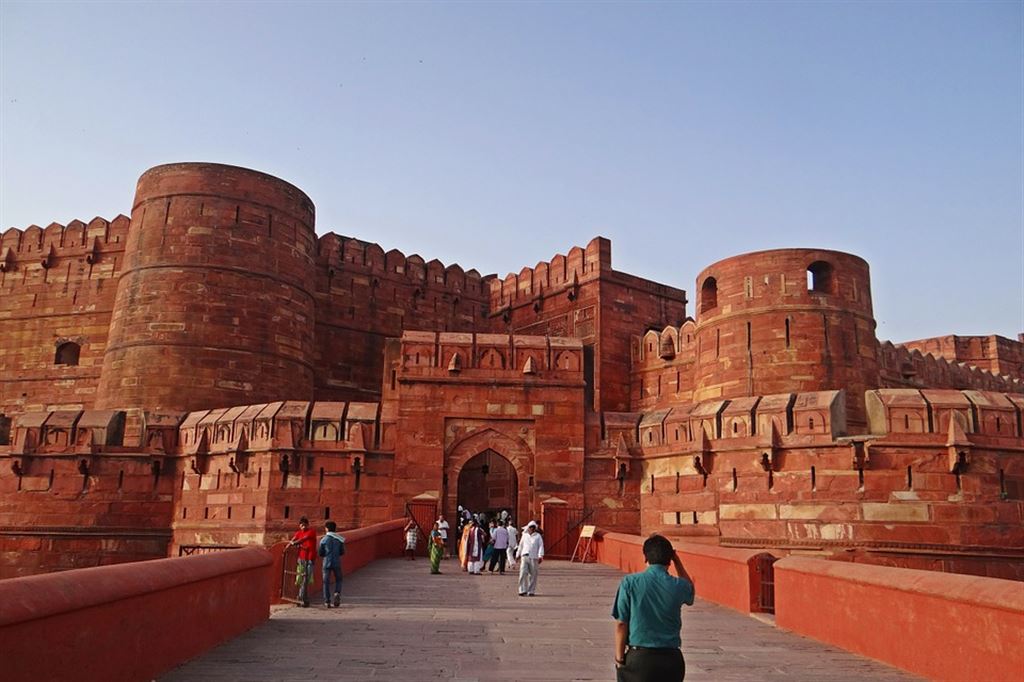 The main entrance of Agra Fort.
The main entrance of Agra Fort.
Agra Fort was the home of Mughal kings for a few generations. Every Emperor and their consorts had their distinct manner of living, which is evident in the various parts of the fort. The architectural styles of the sections also vary according to the likings of various emperors. The fort was primarily built with red sandstone, but there were also portions made with white marble. The part built with white marbles was the work of Shah-Jahan. Amongst all the Mughal princes, he was the one to favor the white marbles. Till the era of Shah-Jahan, his father Jahangir, grandfather Akbar had preferred the red-sandstone. The various parts of the fort are marked by multiple living arrangements of Mughal emperors and their queens. The stories related to them are very enjoyable.
Palace of Jodhabai and Noorjahan
As I walked in the main palace area of Agra Fort, the first stop was the palace of Jodhabai, the Hindu wife of Emperor Akbar. The palace still held the place of her worship. She remained a Hindu even after her marriage to Emperor, and used to worship the Hindu gods in the Mughal fort, as before her marriage to Akbar. There is a spacious courtyard, where the queen used to entertain. The upper portion of this courtyard has a stretch of the balcony where her bodyguards used to position themselves during various events. Adjacent to her quarter, there is a vast area which used to be the study of Akbar and Jodhabai’s son, Selim. As Emperor Akbar didn’t get a chance to receive an education at an early age due to the pressures of the kingdom, he encouraged his son to get a proper education. Books were not available in that time, but many hand-written rare manuscripts are still present there.
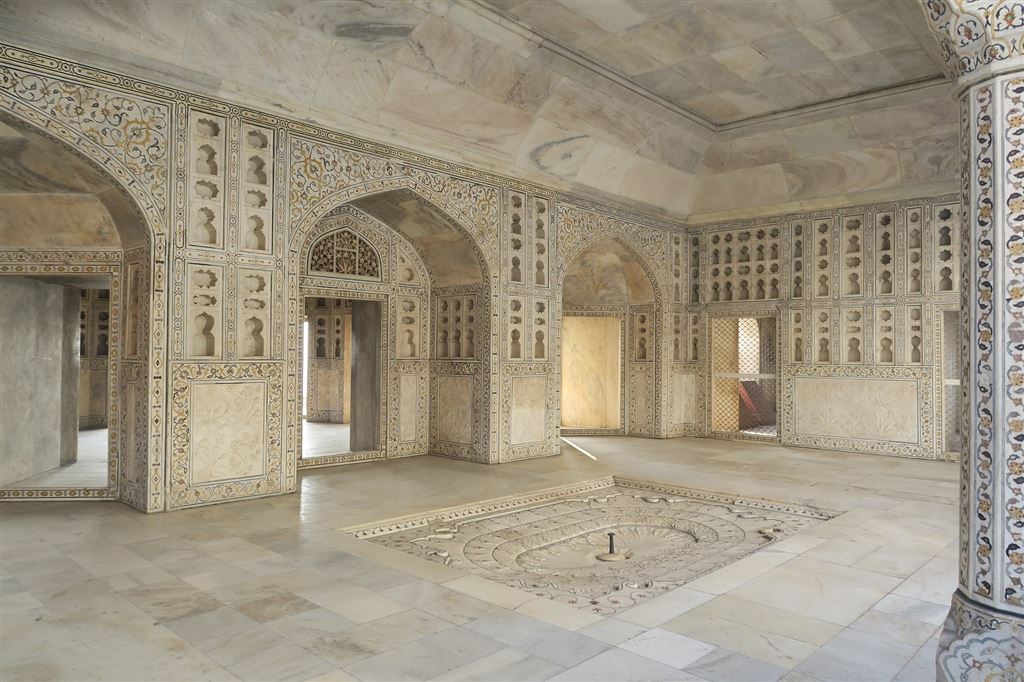
Stepping forward I came across the quarter of Noor-Jahan, the mighty and famous queen of Emperor Selim, also known as Jahangir. Her quarter was uniquely designed; which can be described as an air-conditioned chamber. The room had a surrounding hollow chamber, from where cold water was poured to keep the room cool. In an era devoid of electricity or modern facilities, the engineering was indeed impressive.
The Unique Architecture of the Shah-Jahan quarter
After passing through the chamber of Noorjahan, I finally arrived at the white marble quarter built by Shah-Jahan. From the balcony of this quarter, I got my first glimpse of Taj Mahal. From the balcony, Taj Mahal looked quite far and smaller, but as we came backward, Taj Mahal looks quite more prominent. I was amazed to know that the entire miracle just took place due to the optical illusion. A beautiful courtyard was adjoined to the quarters, where the famous Mina Bazaar used to take place. In one side of the courtyard, there is the Shish-Mahal, the bath place for the queens. Though the entry inside was prohibited, yet the technical arrangements inside this place could put our modern technology in shame.
There is a huge room which was supposed to be the bedroom of Shah-Jahan and Mumtaj. Crossing the rectangular room, the exit takes you to a beautiful courtyard, where the famous Mina Bazaar used to take place. Mina Bazaar was the famous in-house market, where only females could enter. Only the Emperor and his successors were the fortunate males who could visit this unique fair. This fair was organized mainly for the Mughal queens and the princesses, who were mostly not allowed to travel outside the fort.
On the right hand, the courtyard joins in the quarter where Shah-Jahan spent the last few years of his life imprisoned at the hand of his own son, Emperor Aurangzeb. The beautiful balcony was the main attraction, from where he used to spend his time looking at the Taj Mahal. When Shah-Jahan lost his eyesight due to old age, his elder daughter Jahanara had fixed diamonds on the wall. These diamonds used to reflect the Taj Mahal. Thus, the old king thus used to get his last sights of the Taj Mahal, where resided his eternal love, Empress Mumtaj.
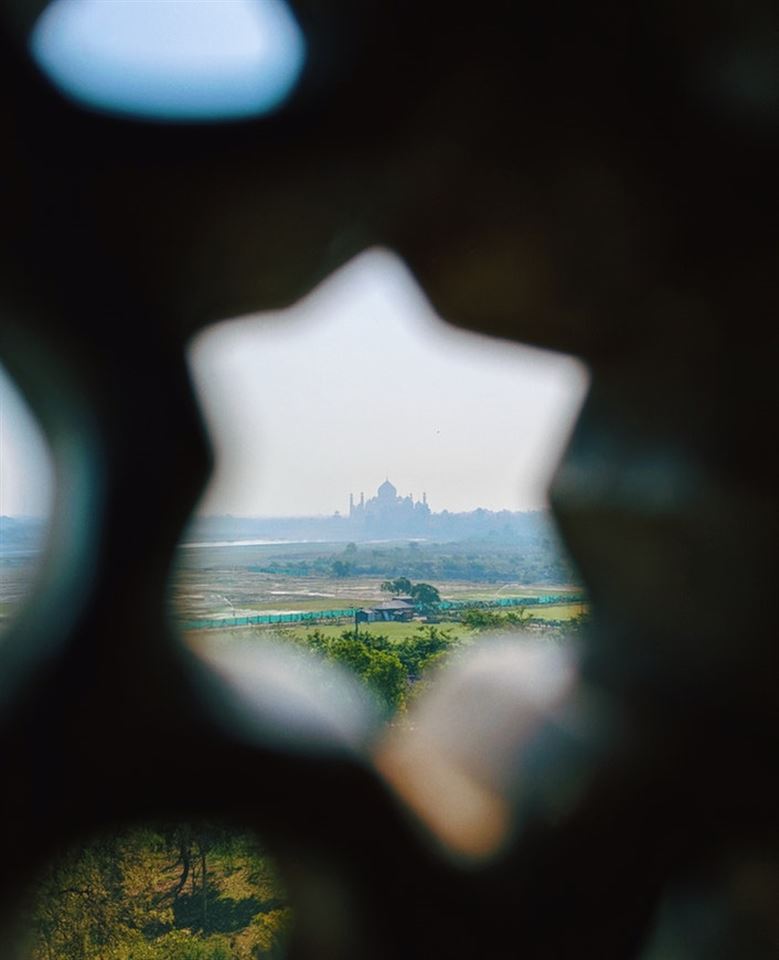 View of the Taj Mahal from Agra Fort.
View of the Taj Mahal from Agra Fort.
Walking ahead, we reached a large courtyard consisting of Dewan-e-aam and Dewan-e-Khas. They were the court of the Mughal kings. Dewan-e-aam was the court for the public, whereas Dewan-e-Khas was the court for the chosen ministry of Emperor.
The army of India controls a large part of this fort. Thus, the major part of the Fort is not opened to the Public. The part which is already open is enough to feel the history related to this fort. Although the city is most famous for the iconic white marble structure of love, a trip to this fort is worth a visit.
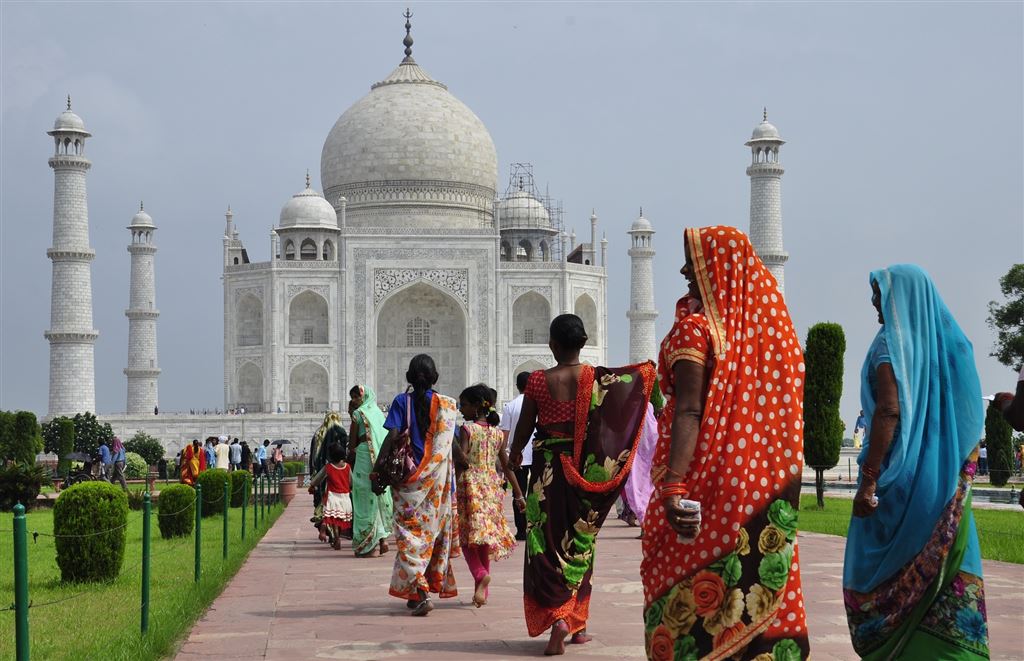 The Taj Mahal
The Taj Mahal